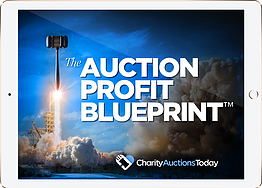DOWNLOAD The Auction Profit Blueprint
The 4 tools BIG organizations use every time to skyrocket auction profits!
The Step-By-Step Guide to stop leaving thousands on the table.
Learn how to create an impact report for your nonprofit. CharityAuctionsToday offers tips on how to analyze and organize your nonprofit’s numbers.

Creating a nonprofit impact report is a crucial task. It showcases your organization’s achievements and communicates your mission.
But how do you create an engaging and effective report?
This guide will walk you through the process. From gathering data to designing the layout, we’ve got you covered.
You’ll learn how to conduct an impact analysis and assessment. You’ll also discover how to use storytelling to bring your achievements to life.
By the end of this guide, you’ll be equipped to create a compelling nonprofit impact report that resonates with your stakeholders. Let’s get started.
A nonprofit impact report serves several key purposes. First, it highlights your organization’s accomplishments. This showcase builds trust among your stakeholders.
The report also communicates your mission. By aligning with your mission, the report reinforces your commitment. This alignment is crucial for credibility.
Engaging donors is another primary goal. A well-crafted report encourages donor retention and engagement. It serves as a thank you to those who support your cause.
Moreover, the report aids in community awareness. It shows the broader impact of your work. This broad perspective can inspire local involvement or partnerships.
An effective impact report supports internal understanding. Team members can see how their efforts translate into real-world results. This insight can boost morale and foster collective purpose.
To summarize, a nonprofit impact report is not just a document. It’s a strategic tool that can achieve several outcomes:
Understanding these purposes will guide the creation process, ensuring your report meets its objectives.
Knowing your audience is key to crafting a compelling nonprofit impact report. Different stakeholders have varying interests. Tailoring content to these needs enhances engagement. Create multiple versions of your impact report for each audience.
Donors often want to know how their contributions help. Focus on outcomes and stories that highlight donor impact. This approach strengthens their connection to your cause.
Board members may look for strategic insights. Provide context on how your work aligns with long-term goals. Including financial data can also be valuable.
Local community members and partners might seek collaboration stories. Highlight partnerships that amplify your nonprofit’s reach. This can inspire new or ongoing support.
Always consider the report’s tone and language. Use accessible language that resonates with all readers. Avoid jargon that might confuse or disengage them. Tailoring your report ensures it is relevant and impactful for each audience segment.
Gathering data is essential for crafting an effective nonprofit impact report. It shows your results and showcases your story. Combining quantitative and qualitative data provides a fuller picture.
Quantitative data includes numbers and statistics. It measures things like the number of people served or funds raised. Such metrics provide concrete evidence of your nonprofit’s reach.
Qualitative data tells the human side of your story. It includes testimonials and case studies. These elements reveal the personal impact your programs have made.
To gather meaningful data, involve various departments. Their collaboration ensures diverse perspectives. Collect data that aligns with your goals and supports your mission.
Use consistent data collection methods for reliability. This process builds trust with your audience. Verify data accuracy before including it in the report.
Organize data into these categories:
Incorporating both data types makes the report engaging and informative. It helps readers connect emotionally and intellectually with your work.
Impact analysis is vital for understanding your nonprofit’s effectiveness. It measures the outcomes of your programs. Using this analysis, you can see what’s working and what isn’t.
Impact assessment goes a step further. It evaluates the broader implications of your nonprofit’s efforts. This process highlights both intended and unintended effects.
To begin, set clear objectives. What do you hope to achieve? Define the metrics that will show success. These metrics should align with your nonprofit’s mission and goals.
Gather input from stakeholders to enrich your assessment. They bring valuable perspectives. Consider feedback from staff, beneficiaries, and partners.
Analyze the data to identify patterns and trends. Look for areas of success and opportunities for growth. This analysis builds a roadmap for future actions. By combining analysis with assessment, your report will portray a nuanced view of your organization’s impact. Share these insights to foster trust and guide future strategies.
Storytelling is a powerful tool. It connects with your audience on an emotional level. Through stories, you can illustrate your impact in vibrant ways.
Choose stories that highlight key achievements. They should align with your mission and values. Focus on personal narratives that showcase real-life change.
Use quotes and anecdotes to add depth to your stories. These elements make the report more engaging. They bring authenticity and humanize your data.
Visual storytelling is also essential. Include photos that capture the essence of your work. Images can convey emotions that words alone might miss.
Highlight diverse voices in your stories. Share accounts from beneficiaries, volunteers, and staff. This diversity reinforces the inclusivity of your nonprofit’s impact. By weaving storytelling with data, you create a compelling narrative. This approach not only informs but also inspires action and builds lasting connections with your stakeholders.
An impactful report depends on its design. A well-crafted layout captures attention. It also improves comprehension of your content.
Visuals play a crucial role. Use charts and graphs for data visualization. Infographics can summarize complex information simply.
The layout should be clean and consistent. Use a professional design to enhance readability. This includes smart use of whitespace and typography.
Maintain branding throughout the report. Use your organization’s colors and logo consistently. This reinforces your nonprofit’s identity and mission.
Consider these elements when designing your report:
Such meticulous design not only communicates your message but also ensures your report is memorable and effective in its purpose.
Transparency builds trust. Acknowledging challenges humanizes your nonprofit. It shows stakeholders you are genuine about your impact.
Highlight areas for improvement in your report. This openness can engage readers constructively. It demonstrates your commitment to continuous growth.
Detail your strategies for overcoming challenges. Explain how you plan to address any setbacks. This proactive approach reassures donors and stakeholders.
Balance your challenges with successes. This gives a complete picture of your nonprofit’s work. Emphasize resilience in facing difficulties.
A clear call to action is vital in your impact report. It guides readers on how they can help your mission.
Encourage readers to donate or volunteer. Make these actions easy to understand and execute.
Use persuasive language to motivate engagement. Show the tangible results of their support. Highlight how contributions make a difference.
Include multiple ways for readers to get involved. Options can range from sharing your report to joining an event. Providing choices increases the likelihood of participation.
Distributing your nonprofit impact report widely is crucial. It ensures your message reaches the right audience. Choose platforms that align with your audience’s preferences.
Start by sharing the report on your website. It’s a natural hub for all your nonprofit’s communications. Ensure it’s easy to find and download.
Leverage social media channels to reach a broader audience. Customize posts for each platform to maximize engagement. Share highlights and visually appealing content.
Consider emailing the report to stakeholders and donors. Personalize messages to enhance connection. Highlight key successes that might interest them.
Physical copies can still be effective in certain settings. Evaluate the environmental impact before printing. Distribute them strategically at events or meetings.
Here’s a checklist of distribution methods to consider:
To assess the success of your nonprofit impact report, establish clear metrics. Determine what success looks like for your organization.
One key indicator is the level of engagement. Track downloads, social media shares, and email open rates. These metrics show how many people are interacting with your report.
Feedback from stakeholders provides valuable insight. Conduct surveys or solicit comments. Use this feedback to improve future reports.
Finally, evaluate the report’s role in achieving organizational goals. Consider new partnerships, donor retention, or increased awareness. A successful report should advance your mission.
Crafting a nonprofit impact report is not a one-time task. It is an ongoing journey that evolves with each cycle. Each report is an opportunity to learn and grow.
Continuous reflection on the report’s outcomes is vital. Use these insights to refine your approach and improve future reports. Adaptability is key to staying relevant.
Remember, impact reporting builds trust and transparency. It strengthens relationships with stakeholders, donors, and the community. Never underestimate its power to propel your mission forward.
With each report, your organization becomes more effective. Keep learning, adjusting, and showcasing your successes. The journey of impact reporting is continuous.
Here is a concise checklist to guide your report creation:
DOWNLOAD The Auction Profit Blueprint
The 4 tools BIG organizations use every time to skyrocket auction profits!
The Step-By-Step Guide to stop leaving thousands on the table.

